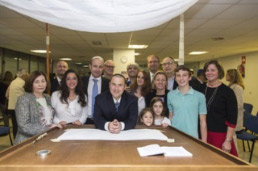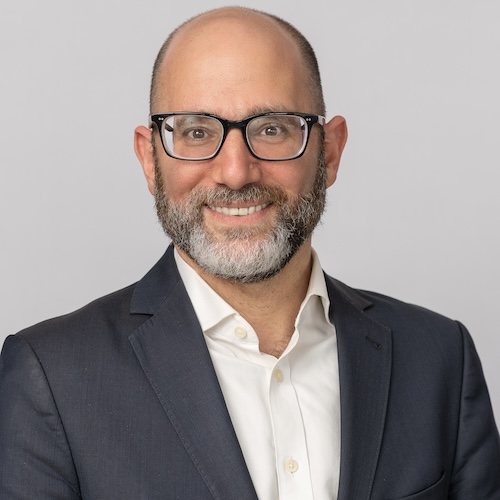
In January 2010, my husband Alan and I moved to Madrid as Alan assumed the US Ambassadorship to Spain and Andorra. We wanted to find a Jewish community in Madrid where we could celebrate holidays and share customs. Synagogues are few there. Only 40,000 Jews live in Spain, and there are no reform congregations.
After Rosh Hashanah, we became part of Communidad Masorti Bet-El, a conservative congregation of 200 members led by Rabbi Mario Stofenmacher. We made friends, worshipped and participated in moving into the congregation’s first permanent home. On a cold January evening, Alan and I helped carry their seven Torah scrolls to Bet El’s new sanctuary. It was a beautiful and joyous event.
Rabbi Mario, as he is known, spoke about commissioning a new Torah to symbolize building a vibrant Jewish community. It would be the first Torah written in Spain in more than 500 years, and the first in Europe to be inclusive, with men and women participating in the writing.
Rabbi Mario hired a scribe and much to my surprise and delight, invited me to write the first word in the Torah, bereshit.
Knowing nothing about Torah writing, I contacted Rabbi Sisenwine who referred me to Rabbi Franklin who had studied the sacred task. He shared his parchment, quill pen and ink and I practiced writing bets after saying a shehecheyanu.
In October 2016, I returned to Bet El to take part in this new beginning, which marked the congregation’s 25th anniversary. Rabbi Mario introduced the Torah scribe, Gustavo Suraszki, an Argentina-born rabbi, who called my name to join him. Imagine my surprise when the rabbi told me to put my arm on his arm while he wrote the first word. An easier task for sure, but not what I expected. After carefully drawing the bet, Rabbi Suraszki blessed me, and then the congregation chanted a shehecheyanu.
In November 2017, Alan and I returned to Madrid and attended Friday night services at Bet El. Almost one year to the date of the first word being written, the new Torah was revealed to the congregation. Rabbi Mario exclaimed, “This Torah is here for the future generations, l’dor vador.

